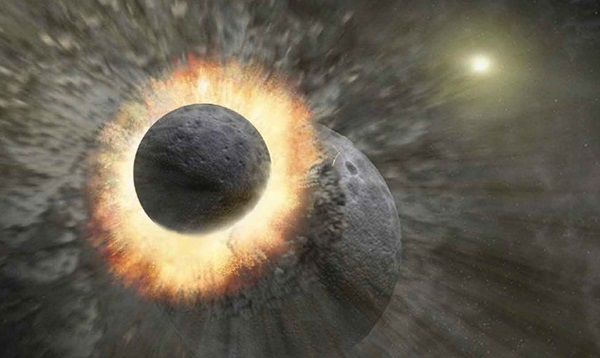The Giant Impact Hypothesis proposes that the Earth’s Moon formed from the collision of a partially solid Earth with a more solid planetary object called Theia. No physical evidence of the event has been discovered until Dr. Daniel Herwartz with Georg-August-Universität Göttingen and colleagues from two other German universities examined the oxygen isotope differences in rocks from the Moon.
Theoretically every planet should have a slight variation in composition even though the basic chemical entities that make up most of the known planets are the same. If a cataclysmic collision formed the Moon then the composition of the Moon should be partly like Earth and partly like the proposed planetary object called Theia. The researchers found differences in the relative concentrations of the isotopes of oxygen in rocks returned from the Moon by the Apollo 11, 12, and 16 missions.
The geologists compared the Moon rock composition to the composition of meteorites that are known to have originated from the lunar surface that have been found on Earth in Russia, the Sudan, Antarctica, the United States, China, and Europe. The difference in oxygen isotope concentrations of Moon rocks was small but measurable. This is the first physical evidence that supports the Giant Impact Hypothesis for the formation of the Earth’s Moon.
No physical evidence of Theia has been found on Earth to date and there is little likelihood that surface evidence of the impact still remains on Earth. The composition elucidated in the new study shows that the Moon may be as little as eight percent Theia or as much as 50 percent Theia. The scientists do point out that the small differences in oxygen content found in the Moon rocks could be explained by the number of carbon containing meteorites that have struck the Earth over the last 4.5 billion years.















